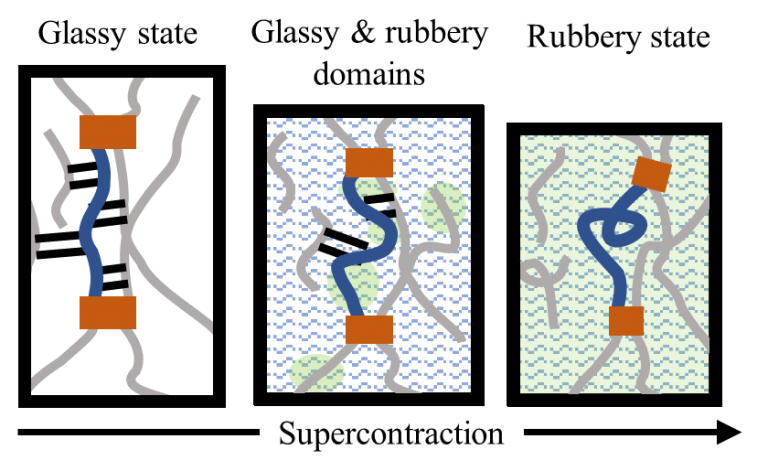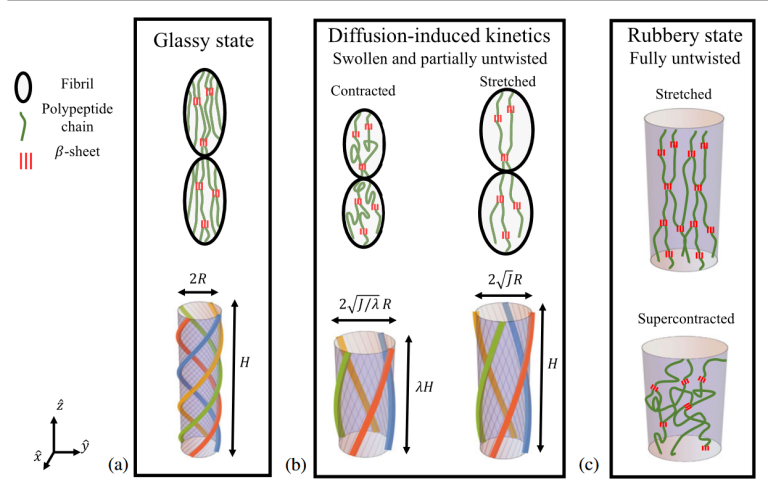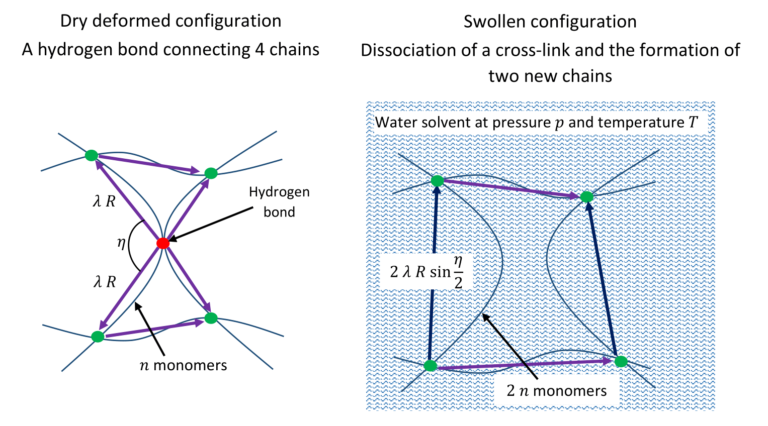Humidity-driven supercontraction and twist in spider silk and its mechanical response
Spider silk is a protein material that exhibits extraordinary and nontrivial properties such as the ability to soften, decrease its length by up to ∼60%, and twist upon exposure to high humidity. These counter-intuitive behaviors are the result of a transition from a highly oriented glassy phase to a disoriented rubbery phase. Our new work presents a model that explains the origins of this phenomena. The insights from this work motivate the development of novel biomimetic materials.
Check out our work here:
Deformation and failure mechanisms in spider silk fibers
The underlying mechanisms behind the hydration-induced and mechanical response of spider silk




